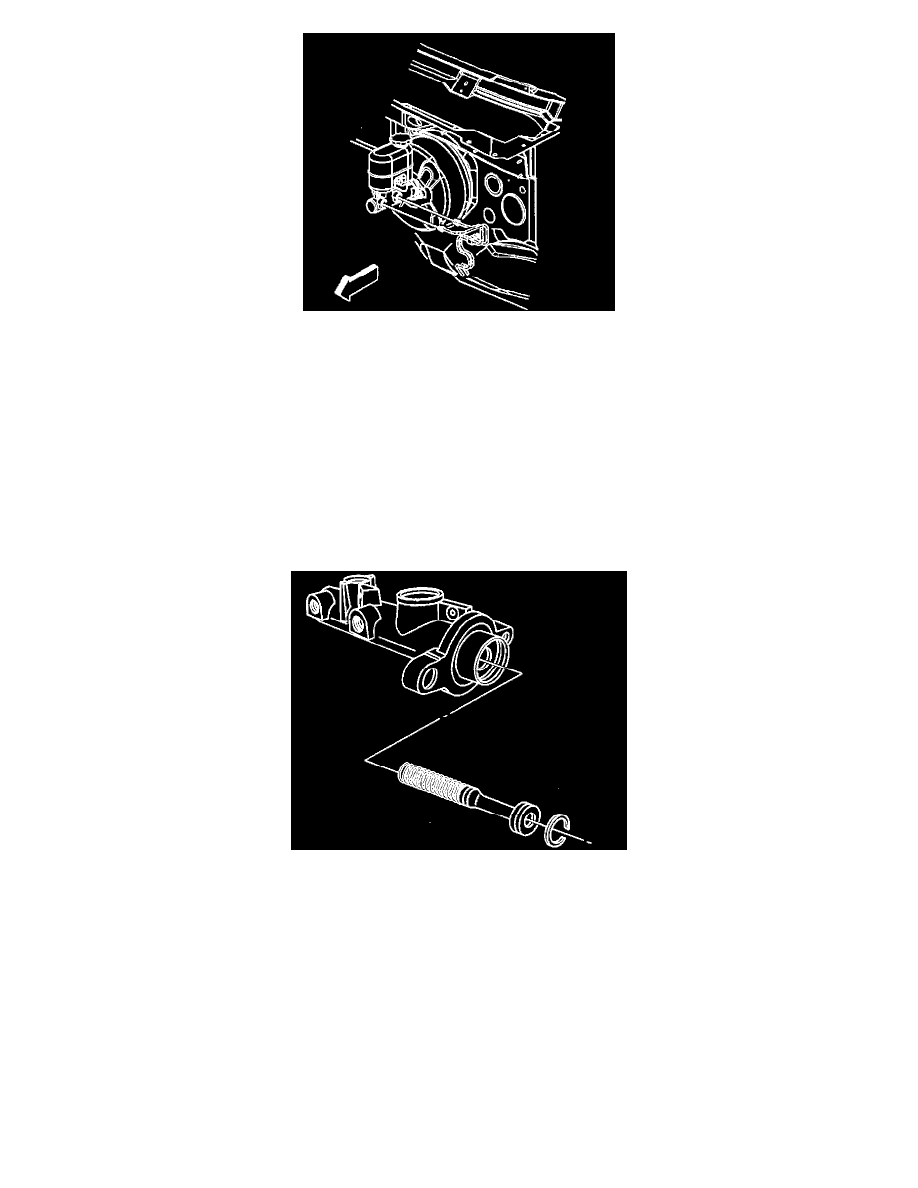K 2500 Yukon 4WD V8-6.0L VIN U (2000)

6. Connect the brake pipes.
^
Tighten the fittings to 25 N.m (18 lb ft).
7. Connect the electrical connection at the brake fluid level sensor.
8. Bleed the brakes. Refer to Automated Bleed Procedures.
9. Release the parking brake.
Master Cylinder Overhaul
Disassembly Procedure
Notice: Do not hone the master cylinder bore. When the brake master cylinder is overhauled, it is recommended that the cylinder body be replaced
rather than CLEANED UP by honing the bore. The master cylinder has a hard, highly polished BEARINGIZED surface, which is produced by
diamond boring followed by ball or roller burnishing under heavy pressure. Honing will destroy this hard smooth surface and cause rapid wear of the
rubber cups.
1. Remove the master cylinder brake fluid reservoir. Refer to Master Cylinder Reservoir Replacement.
2. Remove the snap ring.
3. Remove the primary piston assembly from the master cylinder body.
Caution: If air pressure is used to remove the secondary piston, place the open end of the cylinder bore approximately 25 mm (1 inch) from a
padded workbench or other surface to catch the piston when it comes out of the bore. Apply low air pressure very carefully to ease the piston out
of the bore. Never point the open end of the bore at anyone when applying air pressure. The piston may come out of the bore with considerable
force and cause personal injury.
